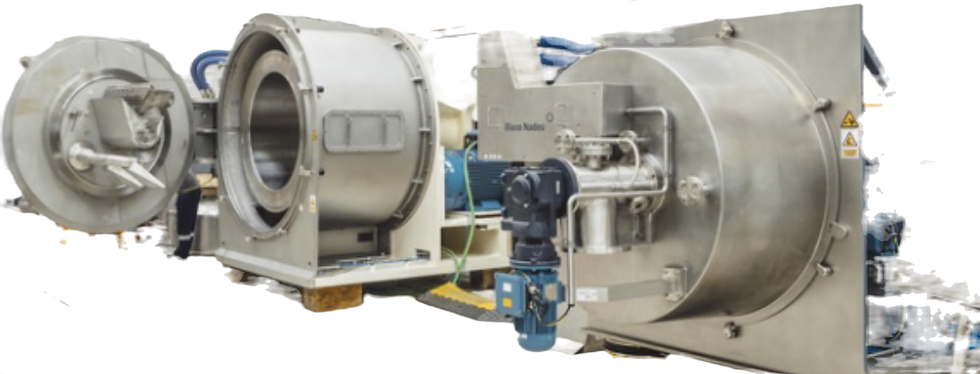Centrifuges
There are many types of centrifugal separators on the industrial market for separation of liquid-liquid and liquid-solids. Based on sedimentation only or combined with filtration. Filtration centrifuges operate with filter cloths and screens.
The separation principles:
Sedimentation – based on the difference of specific gravity (SG) of liquid and solids phase. The larger the difference in SG, the quicker the separation. The lower the viscosity of the liquid the faster the separation and the shorter the processing time required. The heavy and light components are discharged through different ports and piping.
Filtration – the filtration basket is perforated to allow liquid drainage. The filter cloth or mesh is installed on the basket. After the basket gets up to speed the slurry feed is started by gravity or pumping, the slurry enters the basket and are exposed to the centrifugal force. The solids start to sediment down onto the filter cloth. A solids cake is formed and the liquids filter through the cake, the cloth and the perforated drum, also driven by the centrifugal force. The cake can be washed with fresh wash liquids. After the final dewatering the basket rotational speed is slowed down for peeling knife discharge, or in the case of a basket centrifuge, the basket is stopped and the basket is lifted out for manual cake discharge.
Continuous centrifuges feed the slurry, separate the different phases and discharge them without changing the basket rpm. There can be sedimentation at first followed by a wedge wire screen or slotted plates with slots of about 60 up to 300 micron. The solids are transported through the machine by a scroll which rotates a little faster than the basket or bowl. The solids are dewatered, and can be washed and spin dried before a next process step like thermal drying.







